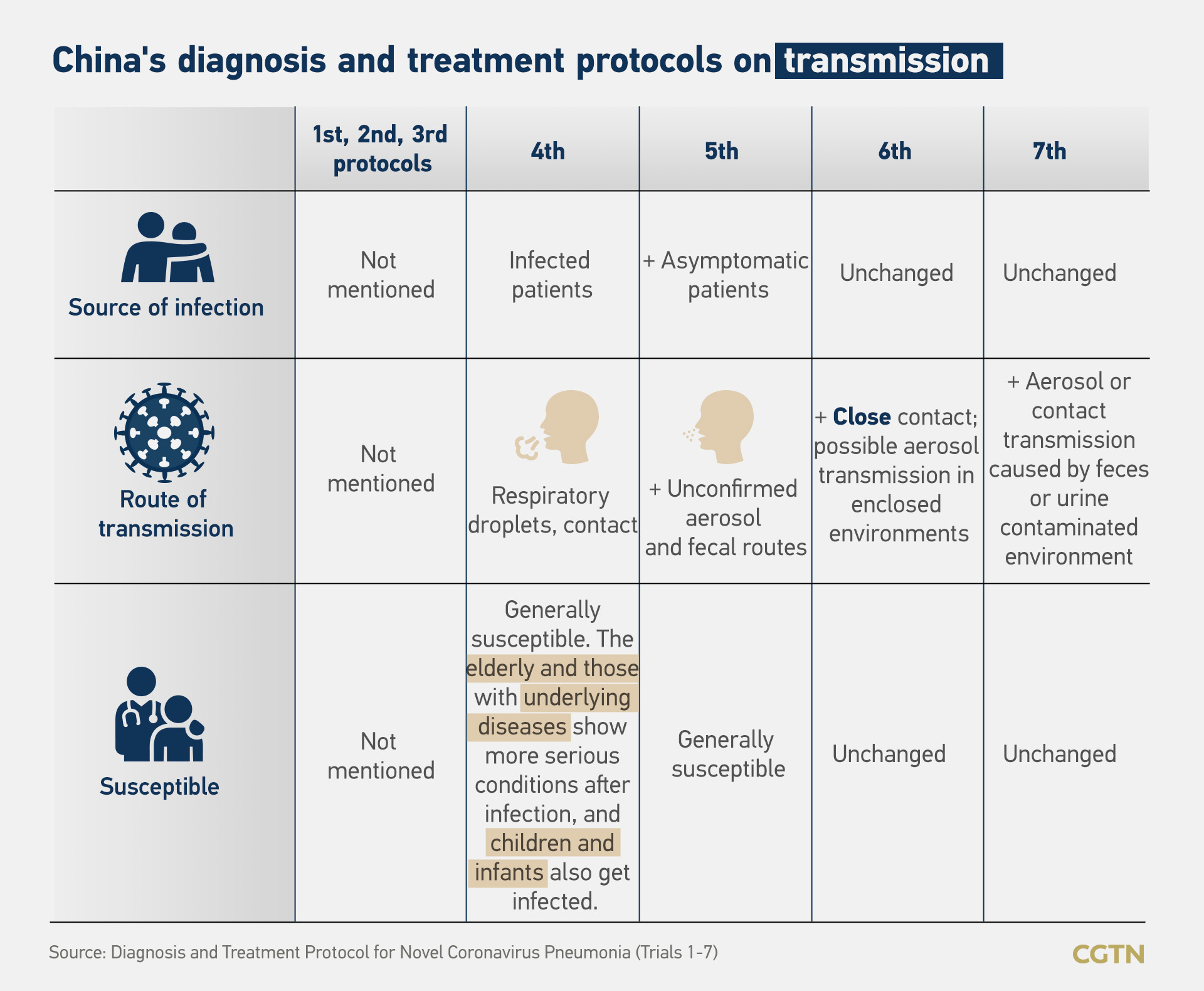As an early front line of the COVID-19 epidemic, China has issued seven evidence-based guidelines on coronavirus diagnosis and treatment, which have proven to be effective in global epidemic prevention and control.
Soon after the outbreak, the experts from the National Health Commission formulated the first guidelines in January, and then updated six versions in less than two months to provide clinical staff with the latest effective methods in identifying, diagnosing and treating the disease, which had never been experienced before but with wide and quick infection rate.
CGTN analyzes the characteristics of the clinical diagnosis and treatment of the novel coronavirus pneumonia by comparing the seven versions, and gives a glimpse as to how they reflect Chinese clinicians and public health professionals' improving knowledge of the disease.

The fifth version first identifies asymptomatic infected people as an infectious source.
Apart from the main route of transmission – droplets and contact – the fifth, sixth and seventh versions state possible transmission through aerosols and digestive tracts, which remind healthcare workers to pay attention and take more stringent protective measures when performing aerosol-generating procedures.
Compared with the previous ones, the fourth trial clarifies the epidemiological characteristics, the susceptible population and incubation period. It also starts clinical classification and adds psychological counseling treatment.
In terms of traditional Chinese medicine (TCM) treatment, it proposes specific medication prescriptions for different periods such as the "medical observation" and "clinical treatment" periods.
The fifth edition updates the epidemiological characteristics, disease classifications, and diagnosis and treatment methods. In particular, different methods are proposed in the diagnosis between Hubei Province and the rest of China.
The sixth edition adjusts and updates TCM treatment, and increases recommended medicine based on the stages in the previous edition.
The seventh edition summarizes pathological findings from limited autopsies and biopsy studies, provides clinical manifestations of pregnant patients and children. It also adds a third serological evidence of confirming cases.
Each version was updated with a better knowledge of the clinical manifestations and pathology of COVID-19, with the accumulation of experience in diagnosis and treatment, and has provided clinical medical personnel with a more comprehensive and more efficient guidance.
Read more:
Graphics: Treatments show promise against COVID-19 in China
Infographic: Latest on COVID-19 diagnostic and treatment guidelines
(Graphics: Li Yueyun, Yin Yating, Feng Yuan)